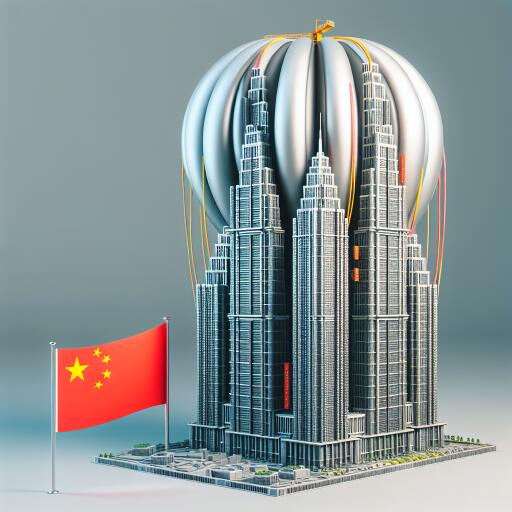Chinese Authorities Level Serious Accusations Against Evergrande for Financial Irregularities
In a significant development, the China Securities Regulatory Commission (CSRC) has leveled serious accusations against Evergrande, a giant in the property development sector, and its founder Hui Ka Yan. The allegations center around the inflation of revenues on the mainland to the tune of almost $80 billion for the years 2019 and 2020. This comes as part of the first detailed public disclosure by the regulatory authorities regarding the financial discrepancies that played a part in the downfall of the world’s most heavily indebted property developer.
According to documents submitted by Evergrande to the Shenzhen and Shanghai stock exchanges, the regulatory body has proposed a substantial fine of Rmb4.2 billion (approximately $580 million) against Hengda Real Estate, the company’s mainland business arm. These documents include charges of falsification present in the financial reporting of the company. Furthermore, Hui, once recognized as the wealthiest individual in China, is slated to receive a Rmb47 million fine and could potentially face a lifetime ban from engaging in the country’s market, as per the preliminary decision by the CSRC. The accusation stands that Hui was primarily directing the inflation of company revenue metrics.
This revelation marks a critical juncture in the unraveling of a corporate collapse that has been marked by opaque dealings, particularly concerning the international investors who invested over $20 billion into an enterprise comprised of numerous residential projects. Evergrande’s liabilities, amounting to more than $300 billion, symbolized the broader extravagances within China’s real estate sector. Its default in late 2021 triggered a cascading effect among its developer counterparts, further straining an already beleaguered economy.
The implications of Evergrande’s Hong Kong-listed entity being directed towards liquidation in January remain ambiguous, especially within the distinct legal framework of the Chinese mainland, home to the majority of Evergrande’s assets. According to the CSRC’s findings, reflected in the Hengda filing, the company had pre-emptively recognized revenue to the tune of Rmb214 billion in 2019—accounting for half of the alleged inflation figure. The situation escalated in 2020 with revenue inflation reaching almost Rmb350 billion, constituting nearly eighty percent of the total allegation.
Furthermore, there exist suspicions regarding the issuance of mainland bonds under fraudulent pretenses. While the CSRC is yet to publicize its preliminary findings directly, these developments highlight significant regulatory scrutiny over Evergrande’s financial practices. The complications extend to offshore investors, as the company had originally defaulted on dollar-denominated bond payments in September 2021. Despite ongoing negotiations for nearly two years, no concrete restructuring plan has emerged.
In the face of financial chaos, Beijing has shown a clear preference for ensuring the completion of residential projects initiated by Evergrande among other developers. This approach aligns with efforts to contain the broader fallout within China’s property sector, evidenced by recent official statistics indicating a continued downturn with property investment decreasing and new construction starts experiencing a significant drop.
The scandal has also brought under spotlight the auditing practices carried out by PricewaterhouseCoopers Zhong Tian, Evergrande’s auditors for 2019 and 2020, raising questions regarding the accuracy and reliability of financial reporting. This incident has shed light on potentially deeper financial misreporting within Evergrande’s accounts, sparking debates about the extent of financial mismanagement within China’s real estate sector and its implications for the economy at large.
The situation remains fluid as regulators, investors, and analysts closely watch Evergrande’s next moves and the potential ripple effects on China’s property market and financial system.
